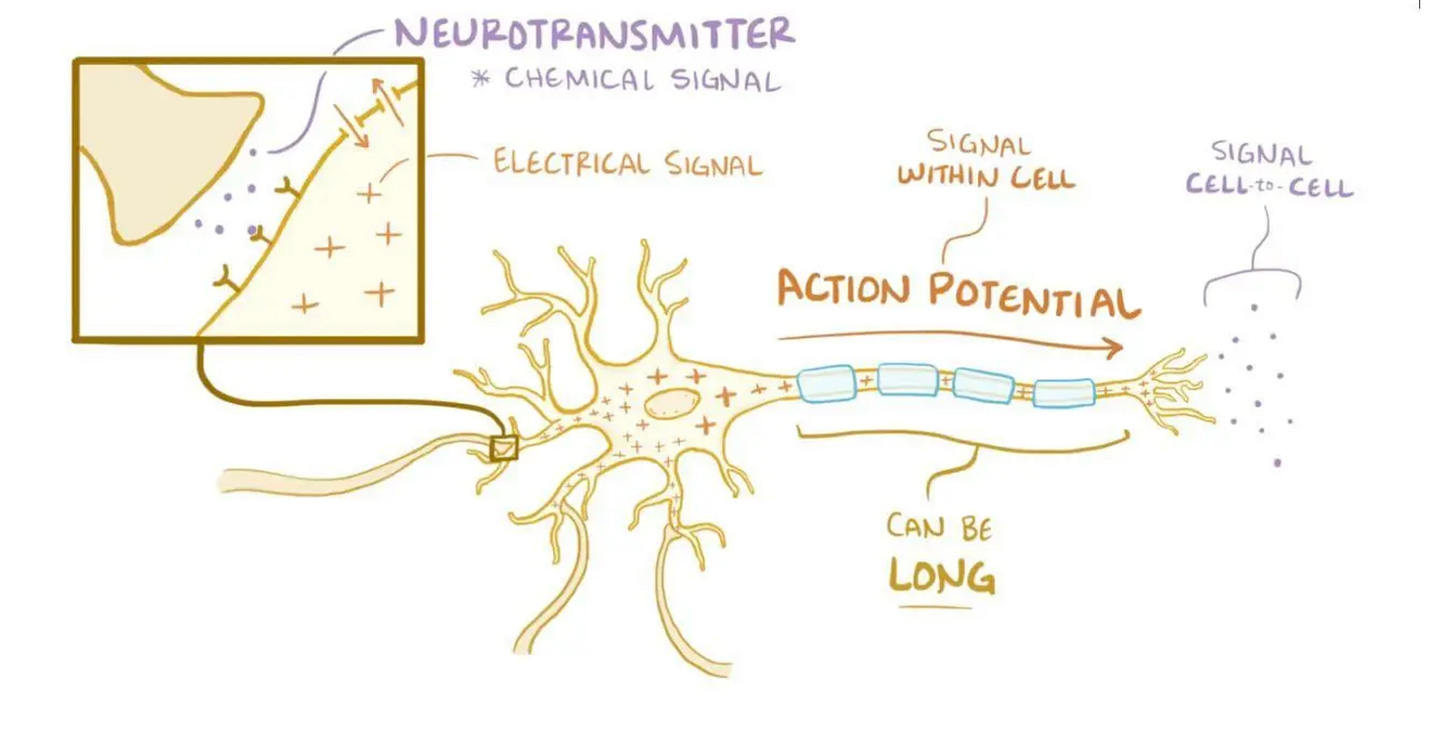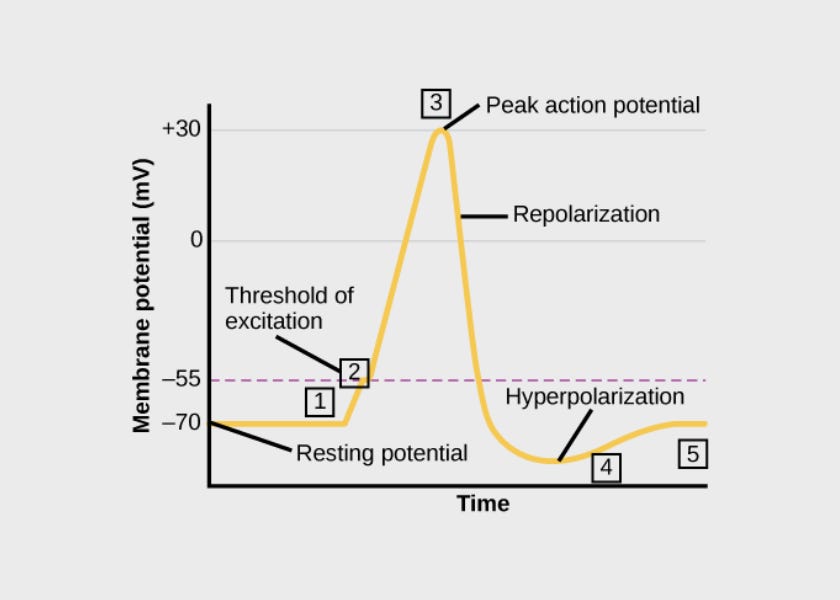In science, one concept stands out to me as both biologically fundamental and metaphorically enlightening: the action potential.
This electrical signal travels down a neuron’s axon, enabling nerve cells to communicate. Without action potentials, we wouldn’t move, sense our environment, or think complex thoughts.
Each word you’re reading right now is the result of many action potentials firing within you.
Beyond its medical significance, the action potential offers invaluable lessons about behavioural change.
The science of the action potential

Credit: Osmosis
A neuron is a high-tech communicator in the body, sending fast messages using electricity and chemicals. It keeps a small electrical charge difference between its inside and outside, like a built-in "battery," thanks to the distribution of ions like sodium and potassium.
When a neuron gets signals from other cells, these nudge its internal charge closer to a tipping point, like water filling a bucket until it overflows. If it reaches this threshold, tiny "doors" on its surface open, letting sodium ions rush in and creating an electrical spark: the action potential.

This spark zips down the neuron’s axon and triggers chemical messengers that pass the signal to the next cell, telling muscles to move, glands to release substances, or other neurons to keep the signal going.

The key is that the signal is all-or-nothing. A neuron either fires completely or stays silent, like flipping a light switch.
If the right conditions aren’t met, it doesn’t work.
What does this have to do with behaviour change?
This all-or-nothing principle can mirror the momentum required for life changing behavioural change.
How many times have you hovered below the “threshold” for real action, stuck in the planning or wishing stage? Or maybe, you’ve made some changes but it just doesn’t stick for long enough.
Partial efforts can build habits, but lasting, transformational change requires full commitment and multi-dimensional alignment.
If the right conditions aren’t met—environment, support, or motivation—it doesn’t work.
Overcoming the threshold
Crossing the threshold requires more than just motivation—it calls for a clear and strategic approach.
It begins with understanding your “why,” setting specific goals, adjusting your environment, and finding sources of accountability. These foundational steps lay the groundwork for sustainable change. But true transformation often requires going even deeper.
The key difference between us and neurons is that we have the ability to alter our conditions. We can intentionally align various factors to build our “charge” and create the momentum needed to reach our tipping point.
What steps should you take? That depends on your unique circumstances and goals. In future essays, I’ll explore practical strategies tailored to different situations.
For now, know that summing up small, intentional actions—like staying inspired, reducing distractions, or preparing for challenges—can generate the push you need to move from intention to action.
Embracing resistance and discomfort
Additionally, crossing the threshold often feels uncomfortable.
Fear of judgment or social pressure can hold us back, but discomfort is a natural part of change. A neuron doesn’t debate whether to fire once the conditions are right—it simply does.
We can learn from that, bracing for resistance and moving forward.
Conclusion
Failure to change doesn’t define you—it just means the right conditions haven’t been met to overcome your threshold for change.
Lasting transformation requires commitment, preparation, and tolerance for discomfort.
Like a neuron reaching its tipping point, you must create the conditions for action to become inevitable. By committing fully, you can break through barriers and achieve meaningful success.
